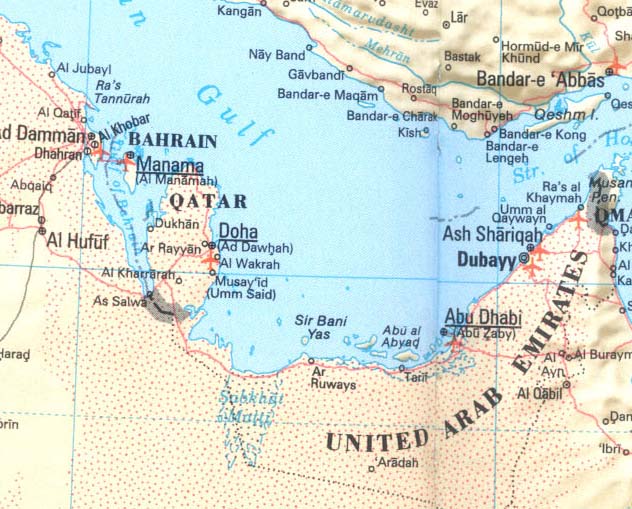We went north of where I'd been before, stopping at an archaeological site of which I show a date press. It is possible to see how the date juice was collected and streamed through a trough to the holding area.

Further north we stopped at a Fort built a 15-20 years ago for a made for TV movie, reputedly called Son of Foxes or Son of Wolves. Just last week there was a piece posted on the web about this site, dated 2001. And now it is gone.

The fort is clearly new although apparently a very good copy of an original, once on the site. A caretaker family lives there and it is open to all. Again, a slideshow of images is available here.

Among the images in the slide show is one of a tower, a traditional windtower with windows on all four sides that capture whatever breeze there may be and direct it down into the room below. These towers, known as 'barjeel' in Arabic, were used in the days before electricity as a primitive form of air conditioning. They function in the opposite way a chimney works, sucking fresh cool air into the house. There is an original such tower, Windtower House, standing within Doha that I hope to photograph soon. Apparently, it is no longer possible to enter it.
As always the dunes, soft talc rock carved by wind, are ever changing and fascinate me so once again I offer some for viewing here.

Ostriches, one seen in the image of the fort above, abound in the Qatar desert and while interesting to observe, they are dangerous to get too close too. They are the largest and heaviest living bird; females can weigh between 90 and 110 kg and they stand up to 2.75 m tall. Naturally their size and weight prevent them from actually taking off even though their wingspan can be close to 2 m. Not too long ago a British resident survived repeated attacks by a male ostriche. While everyone is cautioned against deliberately provoking ostriches, what is less known is how aggressive both the male and female can be during breeding season that begins in April. Ostriches have a history in the region spanning thousands of years, as demonstrated by rock carvings in Saudi Arabia of the Arabian ostriche. Today those found in Qatar are actually African ostriches reintroduced a few years ago after the Arabian Ostriche became extinct. Look at these birds from the safety of the slide show here.



